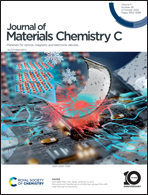A thermally etched N-doped porous layered silicon anode for improved cycling stability of lithium-ion batteries†
Abstract
The development of advanced porous silicon-based materials for lithium-ion battery anodes, which can accommodate the expansion of electrodes during cycling, is necessary to enhance cyclability. In this study, a metal oxide-based thermal etching method, to fabricate N-doped porous layered silicon nanoflakes (P-Si NFs), is proposed. It is carried out by in situ growth of metal oxide (Fe) precursors on siloxene (Si NFs), followed by thermal etching and acid treatment. It is noteworthy that P-Si NFs retain the 2D lamellar structure of Si NFs, and the N-doped porous surface structure can effectively alleviate volume expansion during cycling and improve the efficiency of lithium-ion transport and diffusion. As a result, 89.6% (∼581 mA h g−1) of the maximum capacity (648 mA h g−1) was maintained after 500 cycles at 2 A g−1. The coulombic efficiency remained close to 100%, indicating good cycling stability of the P-Si NF anode. This work provides important insights into the design of silicon-based anodes for high-performance lithium-ion batteries.

- This article is part of the themed collection: #MyFirstJMCC


 Please wait while we load your content...
Please wait while we load your content...